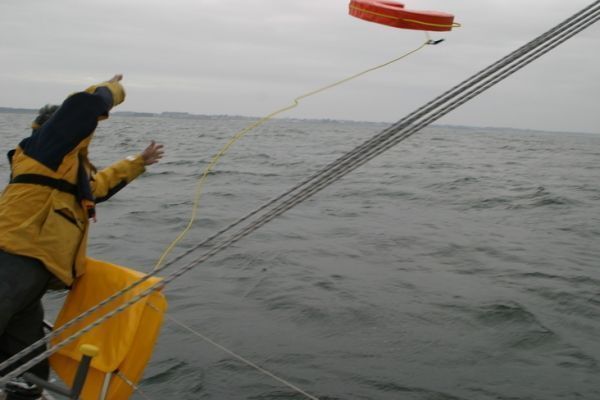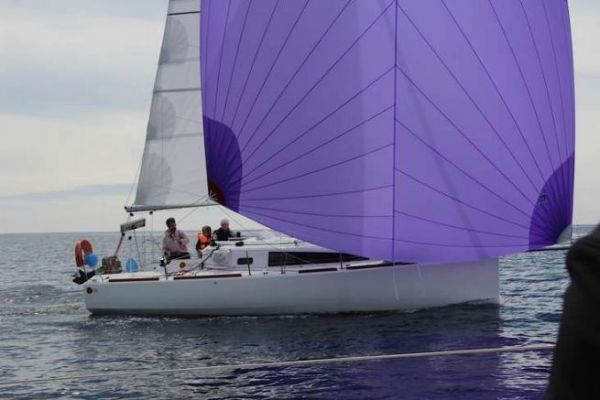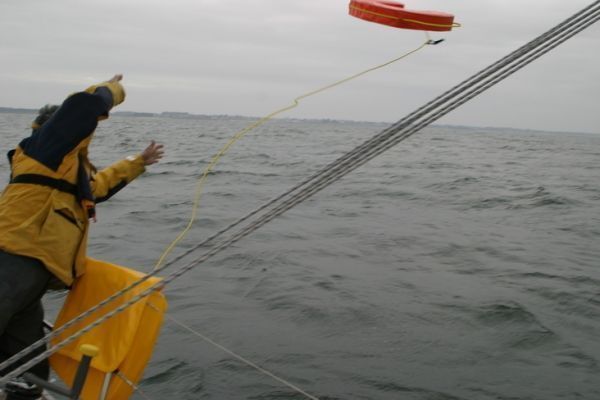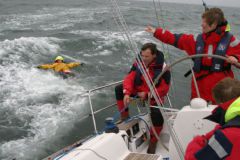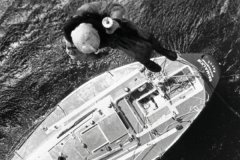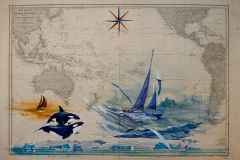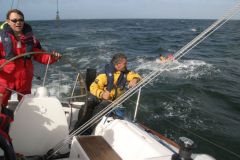One method among others
There are many different ways to recover a man overboard. You must choose the best one for the conditions, your crew and your boat. The Quick Stop is an effective maneuver to quickly recover a man overboard. However, it is particularly important to know it well before applying it in a real situation.
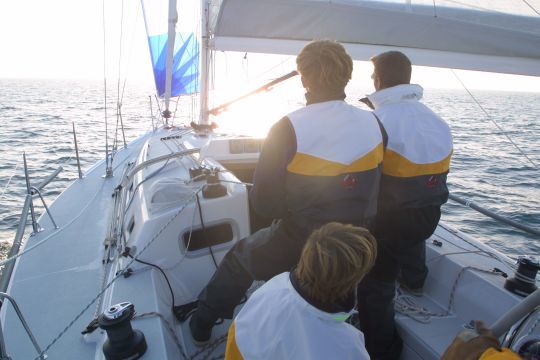
The lookout, an indispensable position
As with all methods, it is essential that a crew member be responsible for a single task: to constantly point the man overboard. If visual contact is lost, the rest of the maneuver will become much more complex.
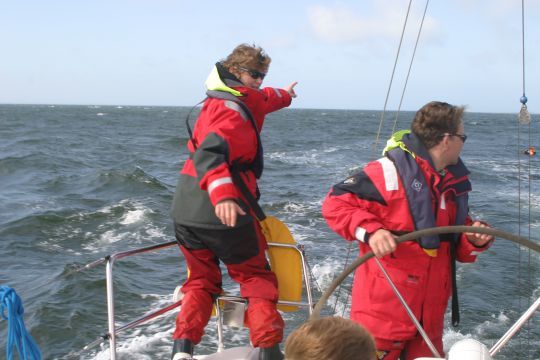
Quick Stop Timeline
As soon as the man overboard has fallen, the witness warns the rest of the crew by shouting "Man overboard" and points the person into the water until he is recovered.
Immediately, the helmsman faces the wind in order to break the boat's headway. The crew members simultaneously tack the mainsail in line and turn on the engine.
Before losing all speed, the helmsman tacked and lowered the boat to the windward mark. The crew members keep the jib against the wind and the mainsail taut. Once downwind, the crew members lower the headsail.
When the helmsman arrived to leeward of the man overboard, he gybed and a crew member slackened the mainsail. The helmsman then luffs gradually to arrive at reduced speed near the man overboard. The ideal is to arrive at the man overboard's level upwind or at full speed. If ever you are too far into the wind, the engine allows you to have propulsion other than the sails and to continue the approach.
The mainsail and the engine, two key points of the maneuver
Tacking with a mainsail on the axis is not an easy task. That's why it's very important to keep the jib against the wind and always keep tacking after the tack. The advantage of the Quick Stop is that you can make a very quick turn back to the man overboard. However, it is possible that you will find yourself upwind when returning to the castaway because the turn is so tight or if you gybe too late! This is why it is essential to think about turning on your engine.
Lowering the jib, a manipulation that can be painful!
During a Quick Stop, when the headsail is lowered, the wind is downwind. In strong winds, when the jib is lowered in this configuration, it is very likely that it will sweep and "whip" the entire forward deck. This is why it is necessary to roll or lower it methodically.
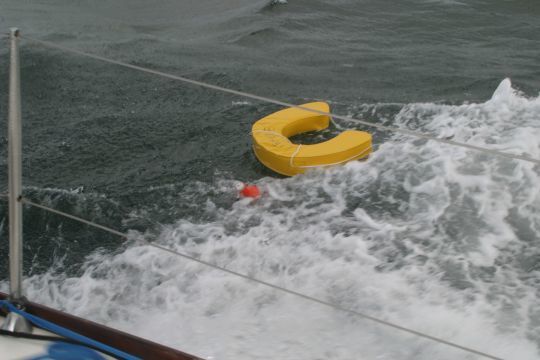
It is necessary to arrive prepared at the level of the HLM
The Quick Stop allows you to quickly return to the level of the castaway. However, once you are at the survivor's level, you must be able to quickly establish a physical link with him. Therefore, during the maneuver, you must think about preparing a line or other link. The rollover light connected to the halyard is particularly useful for this. Afterwards, it is always a good idea to take out the device that allows the person to be re-boarded!

